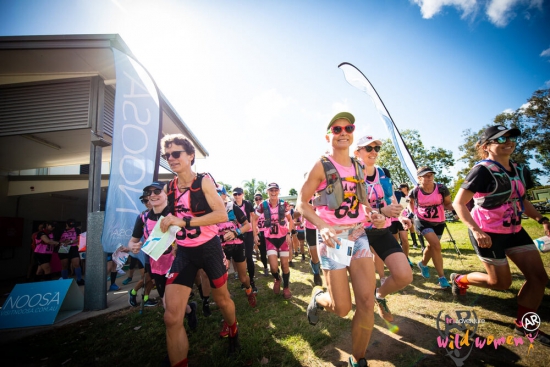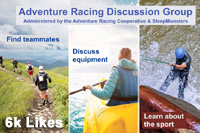Beginners Guide to Adventure Racing Nutrition
Nicole Walker / 17.03.2021

New to adventure racing? Or have you done a couple before, but have no idea what to eat? Tried your best to plan nutrition, but felt sick or bonked halfway? Do you have a 3-6hr event coming up? Read on to get your nutrition plan sorted.
How Long Are You Out There For?
It is good to plan your nutrition per hour that you are out. Are you doing a 3hr, 4hr, or 6hr race? Is it all running or is it multi-sports? If you are racing over a mealtime eg: 8am – 2pm you might need to think about something more substantial to have mid-way through as you are skipping a meal and might find yourself a bit peckish! Is it going to be hot, rainy or cold? Think about the environment as a good starting point!
What Type Of Food Do I Need and How Much Of It?
- You mainly want to be eating easily digested carbohydrates that are low in fibre and high GI. Fat and protein are not as useful for fuelling shorter events but they do get more important for longer events
- Start in training with 30-60g CARBOHYDRATES per hour and progress up to what you want to eat in a race
- In a race aim for 60-90g CARBOHYDRATES per hour but see how you go in training
- Always practice in training first and then stick with whatever you get to. If you can only eat 45g per hour in training without feeling sick then that is also your goal for race day.

APPROX. 30G CARB EXAMPLES:
- 3 x snakes lollies
- 2 x small baked potato in tinfoil
- 2 x pieces of white bread in a vegemite sandwich
- 1 x white bread with a thick layer of honey or jam
- 1 x large slice of cold pizza
- 1 x white bread roll
- 1 x Weetbix slice (check out recipe!)
- 1 x oat-based muesli bar from the supermarket
- 1 x creamed rice pottle
- 1 x bottle sports drink (made at 4% carbohydrates)
- 1 x sports gel
- 1/2 cup of pretzels
- 4 x Cliff brand Bloks
- 1 x 250mL juice box
- 10 dried apricots
- 1 x 300mL can coke
- 2 x mini packets of shapes crackers
- 1 x banana
What a smorgasbord of snacks!
Tips for Planning
- Take a variety of foods: some liquids, some sweets, some savoury, some snacky, some substantial
- Consider eating something a bit more substantial mid race like a mini lunch or whenever is convenient if you are racing for more than 3 hrs
- Try out a bunch of different combos in training, in a similar temperature to race day if possible and for the different disciplines
- Consider taking a couple of items just for “Mood Foods” that aren’t necessarily the perfect nutrition, but they perk you up mid race! Eg: Mini chocolate bars, your favourite chips, a mandarin or other small fresh fruit
- Another golden rule is to eat a little bit, often. Aim to eat every 15-30mins. If you want to keep it simple you might choose 1 x snack option from the above list and eat every 30 mins on the hour and half hour and you should be right!
- Remember to remind your team mates to do this too, especially if they are distracted by navigating!
- Golden rule ALWAYS TRY IN TRAINING!

What Should I Drink and How Much?
Some drinks can also contain carbohydrates and serve two purposes such as sports drink. Electrolytes are handy as they can taste good, making you drink more and replace lost electrolytes from sweat. However, water is just fine as long as you are fuelling at the same time! Remember that 1 Litre = 1kg so it is also important not to take way too much fluid. Know where along the course you can fill up your bottle and if you are prepared to take the time to stop.
How much? It is very individual and it depends how hot it is! In the heat you might need 750mL – 1 Litre or more per hour, in the cold might only need 300-500mL per hour. Try in training and go with your thirst! You might use a bladder in your backpack too. Make sure you know how much it holds and how much you need. You might not need to fill it all up! Also, try to keep just water in your bladder as any sugar or electrolytes causes it to go mouldy really fast even with a clean!
How do I carry my food?
- Clothing: you might wear a bike shirt that has pockets at the back for the whole race, or tights/cycling shorts that have pockets
- Backpack: a small hydration backpack or vest is handy. The best ones have lots of pockets on the front for storing food eg: one for your lollies, one for your muesli bars and a bladder pocket for your fluids or soft flask pockets
- Belt or hip bag: with a drink bottle holder – good if you hate backpacks, but I find them particularly hard to sit tight
- Bike bags: a top tube bag is a really handy food storage and easily accessible.
- Drink bottle cages: are essential on your bike. Try and fit two on there if your bike allows and if you are in a hot environment, I love using 1 Litre bottles (normal bottles are 750 mL).
- Lifejacket pockets: if you are buying your own lifejacket look for one with pockets in the font for easily accessible snacks!
Big pockets on lifejackets come in handy for kayaking nutrition.

Know the Course Rules and Logistics
If you know that you are passing through a transition where you can pick up and leave gear, consider leaving a little bag of food and filled drink bottles. Then you just have to swap the bottles out (not spend time filling them up) and you can pick up more food without having to carry the whole 3 or 6 hours’ worth. Consider eating your heavy food in transition eg: a juice box or creamed rice.
Should I Eat Different Things on Different Legs?
Kayaking: Make sure your kayaking nutrition is waterproof! Otherwise, it might not look like anything nutritious at all! Even if you plan not to fall in (don’t we all?) you often get wet by just paddling and if you need to get in and out of the boat to collect checkpoints. Good options are gels or muesli bars.
Running / trekking: it is easier to eat your sandwiches because you have more hands than in the kayak or on the bike and you might walk for a little while. If you are competitive and running fast, you might not feel like large amounts of food and your sugary snacky foods more often might be best.
Riding nutrition: needs to be easy to access that is why stem bags are great and easily accessible pockets. Nibbling on snacks and muesli bars you can hold and bite easily are great (that’s why snakes are the best compared to smaller lollies!). The ultimate nutrition cycling skill is being able to open and eat a banana without stopping pedalling!
Need More Help?
Join me for my webinar: Planning Nutrition and Logistics for your next Adventure Race on at 6PM AEST Thursday 25th March 2021. Missed it? No worries it is available via recording here.
This advice is a is great place to start for most people, however, some of you may need more individual advice. You might decide to get help if you:
- Have tummy upset problems, specific nutrition needs or medical conditions
- Are getting more competitive and want to maximise your nutrition to win!
- Want to attempt a longer race and are not sure where to start
Get in touch with a Sports Dietitian if this is you!
I am available for consultations in Brisbane, the Gold Coast and Online at Ascent Sports Nutrition and would absolutely love to help you maximise your Adventure Racing dreams!







 SleepMonsters
SleepMonsters



